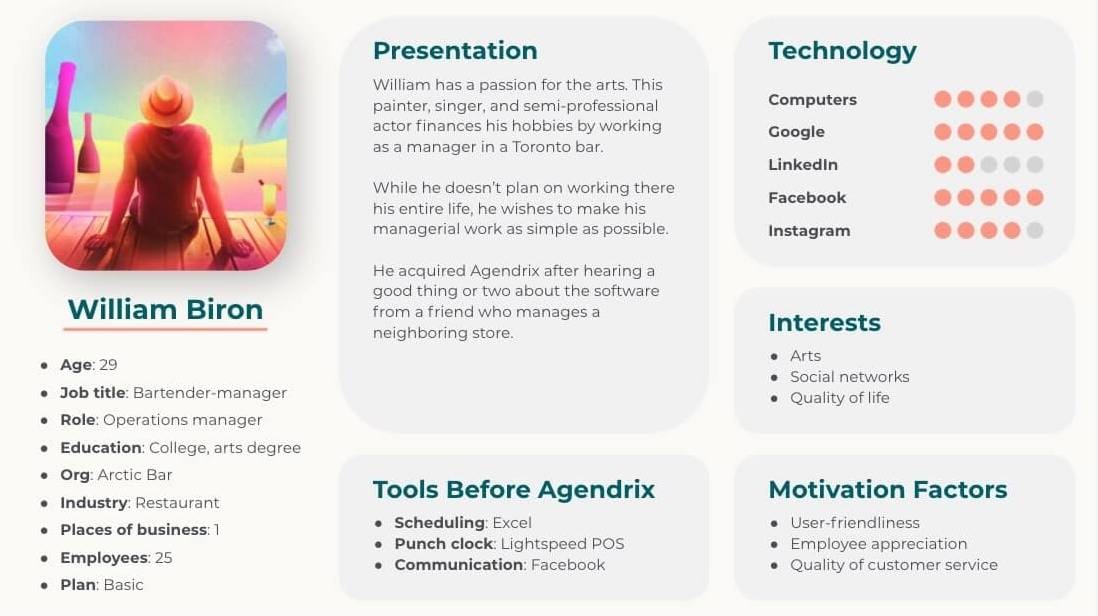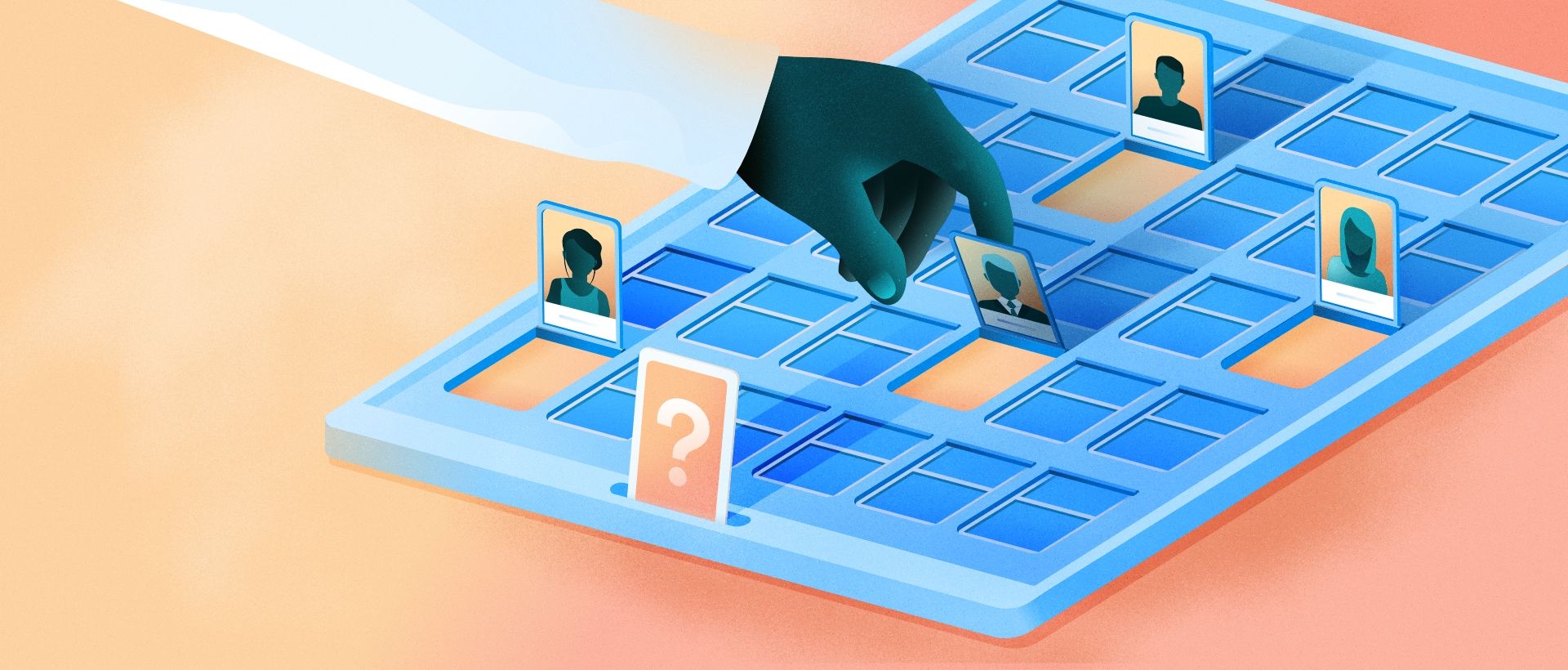Even the best marketing strategy in the world will be for naught if it isn’t aimed at the right audience.
Hence the need to clearly define a customer persona and refer back to it regularly. This way, you’ll ensure your initiatives are always relevant.
To do so, create profiles for your typical clients. This will help you optimize your messages.
Your ideal client profiles should always be up-to-date. It’s therefore worthwhile to go back from time to time to make adjustments.
How to Create Customer Persona
To create profiles that resemble your actual clients as closely as possible, you have to do your research.
The profile you make for a typical client should represent your ideal client.
Don’t think that you know everything about your clients, even if you frequently interact with them. Get accurate information using all the resources at your disposal: Facebook, Google Analytics, client surveys, market studies, and so on.
Here are some avenues to explore at the outset:
- Sociodemographic characteristics: age, profession, income, marital status, etc.
- Psychological characteristics: interests, passions, personality traits, needs, challenges, motivations, aspirations, etc.
- Preferred communication channels: social media, traditional information channels (advertisements, TV, newspapers, radio, etc.), word-of-mouth from family and friends, internet searches, user ratings, etc.
- Potential clients’ roles in the buying decision: influencers or deciders, for example.
Every business is different; you’ll no doubt have to adapt these ideas to your own realities. And don’t hesitate to consult your team members in the process; they’re sure to have helpful ideas to clarify or complement your client profiles.
Case Study: Agendrix’s Clientele
Agendrix’s clientele is diverse. We help SMEs from about twenty different industries. Our clients are in retail, cleaning scheduling, and restauration, home care, and so on, and our application is used by people ages 16 through 70.
At first glance, it’s hard to see any commonalities between those clients.
Still, it’s important to stop and seriously ask ourselves: What do these clients have in common? In other words, what is our customer persona? After multiple discussions and reflections, here’s our conclusion.
This is our client:
- Between 25 and 55 years old;
- Manages from 5 to 250 employees;
- Makes or influences decisions for the business;
- Manages personnel (or HR);
- Has various duties within their organization;
- Is open to new ways of doing things;
- Is very busy and pressed for time;
- Uses Excel (or a manual method) to manage schedules;
- Faces the challenge of managing a variety of schedules (days, nights and weekends).
Anyone who does not tick all of those boxes simply isn’t among our targeted clientele.
By the way, here’s one of our client profiles:

Customer Persona as the Basis for All Marketing Efforts
When you know who your customer persona is, the messages to put out and the channels to use come into clearer focus. And that is the key to effective marketing. The better defined the client, the more you’ll be able to customize your every initiative for maximum efficiency.
Now it’s your turn! Who exactly is your typical client?










